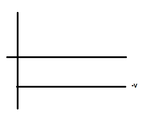ricperes
Junior Member level 2
Hello, i need help, because i don't know what i'm doing wrong. I just made this schematic, and had good results, however an overnight ceased to work and not know why. Already replaces drivers IR2110, and still have short-circuit the source.

I connect de Resistence R3 and R4 to the pins mentioned in the image ..


I connect de Resistence R3 and R4 to the pins mentioned in the image ..



